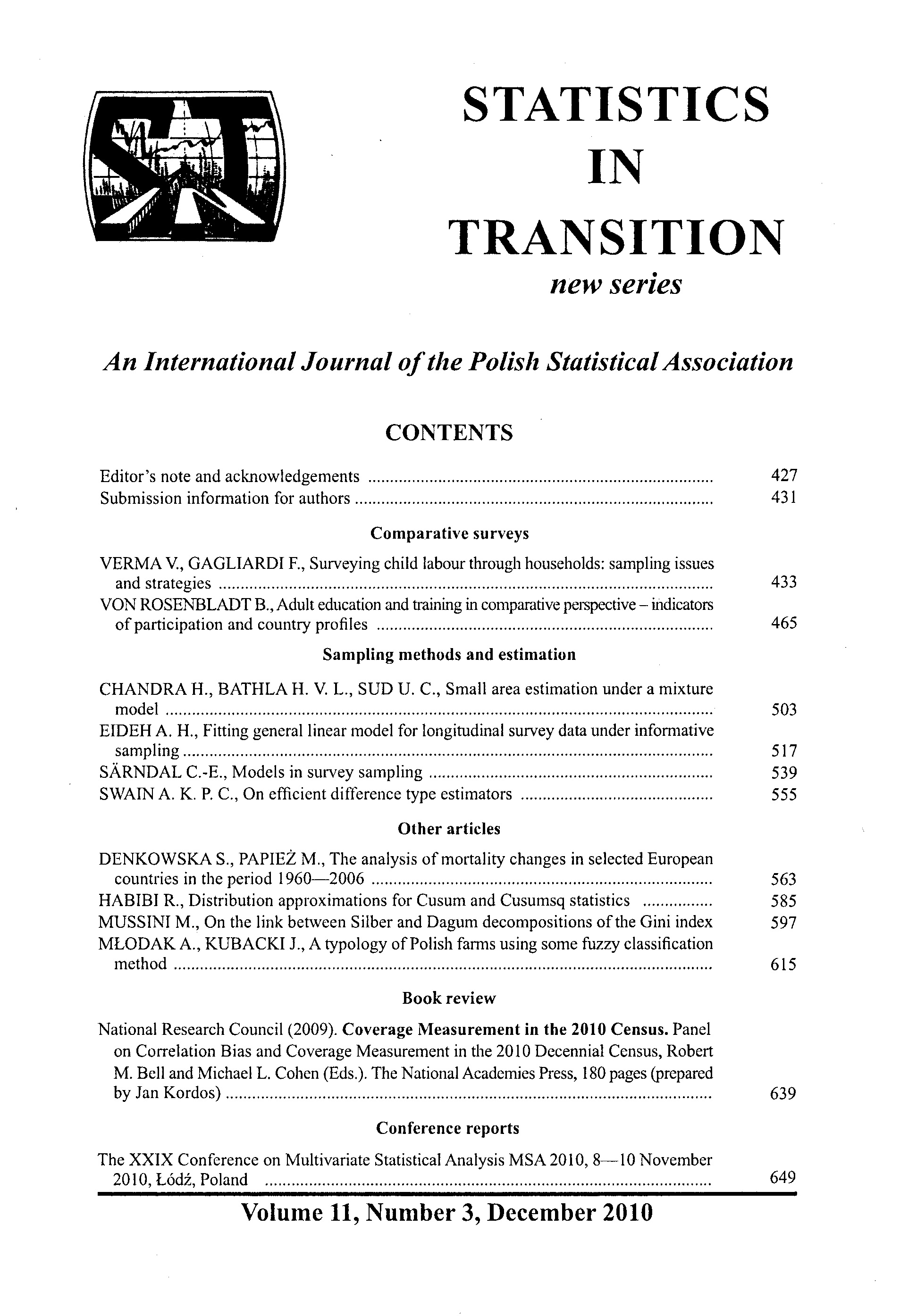ARTICLE
ABSTRACT
This paper addresses sampling issues arising in the context of household-based child labour surveys. It presents some of the sampling strategies elaborated in the ILO book Sampling for Household-based Surveys of Child Labour (Verma, 2008). A typology of surveys of child labour is identified, and the fundamental distinction between two types with very different objectives - termed 'child labour surveys' and 'labouring children surveys', respectively - is clarified and emphasised. Following a broad survey of national practices in conducting surveys of child labour, linkages between different types of surveys and some specific sampling techniques are explained.
KEYWORDS
child labour, household surveys, sampling, ILO.
REFERENCES
HUSSMANNS, R, MEHRAN, F. and VERMA, V., 1990. Surveys of Economically Active Population, Employment, Unemployment and Underemployment: An ILO Manual on Concepts and Methods. Geneva: International Labour Organisation.
INTERNATIONAL LABOUR ORGANISATION, 2004. Child Labour Statistics: Manual on Methodologies for Data Collection through Surveys. Geneva: International Labour Organisation, International Programme for the Elimination of Child Labour (IPEC).
KORDOS, J., 2008. Bookreview: Sampling for Household-based Surveys of Child Labour, by Vijay Verma, Statistics in Transition, 9(3), 587?590.
PORTUGAL MINISTRY OF LABOUR AND SOLIDARITY, 1998. Child labour in Portugal: Social Characterisation of School Age Children and Their Families. Lisbon: MTS.
TOMPSON, S.K. and SEBER, G.A.F., 1996. Adaptive Sampling. John Wiley & Sons.
VERMA, V., 2008. Sampling for Household-based Surveys of Child Labour. Geneva: International Labour Organisation.
